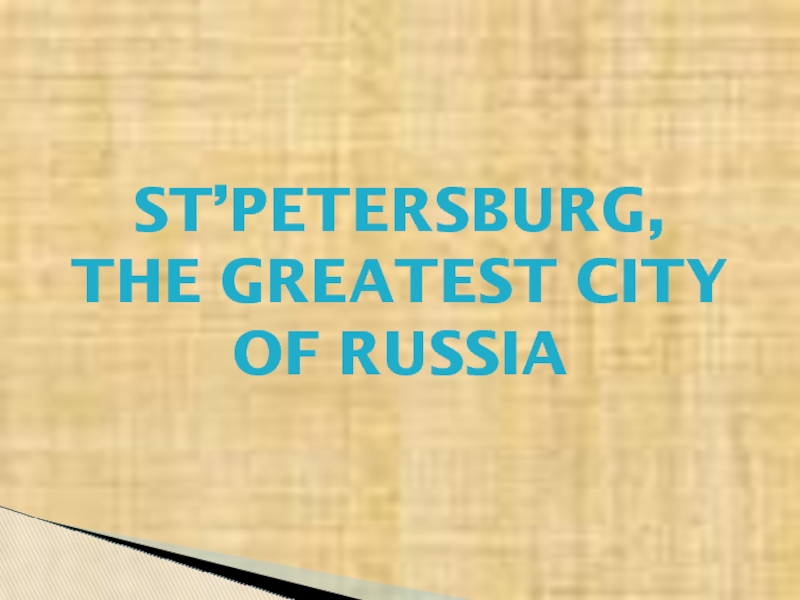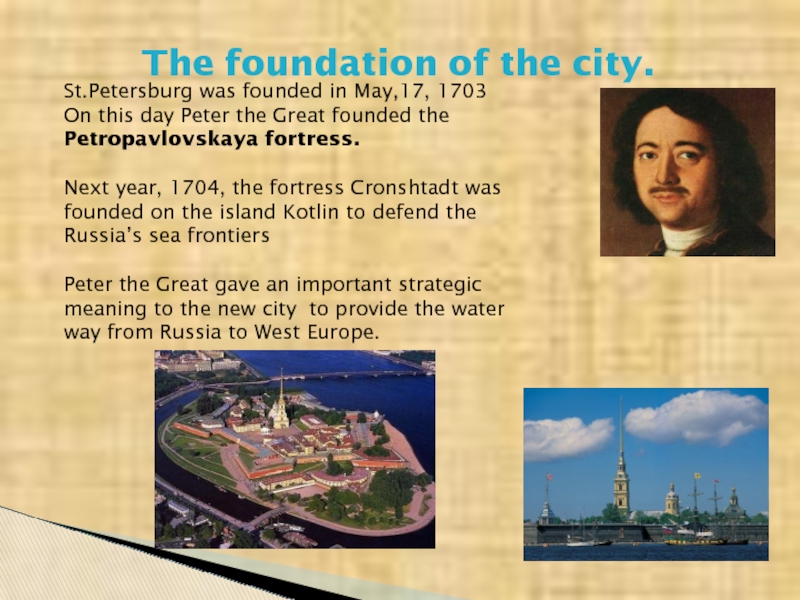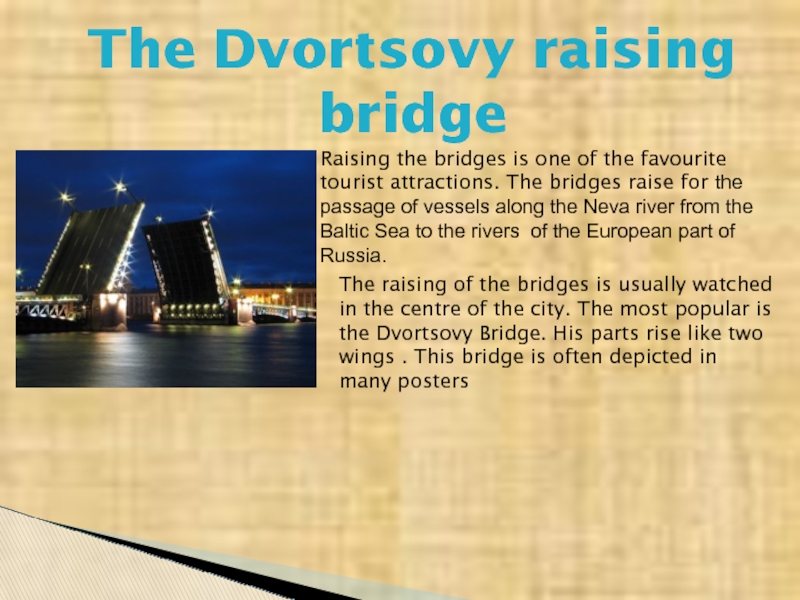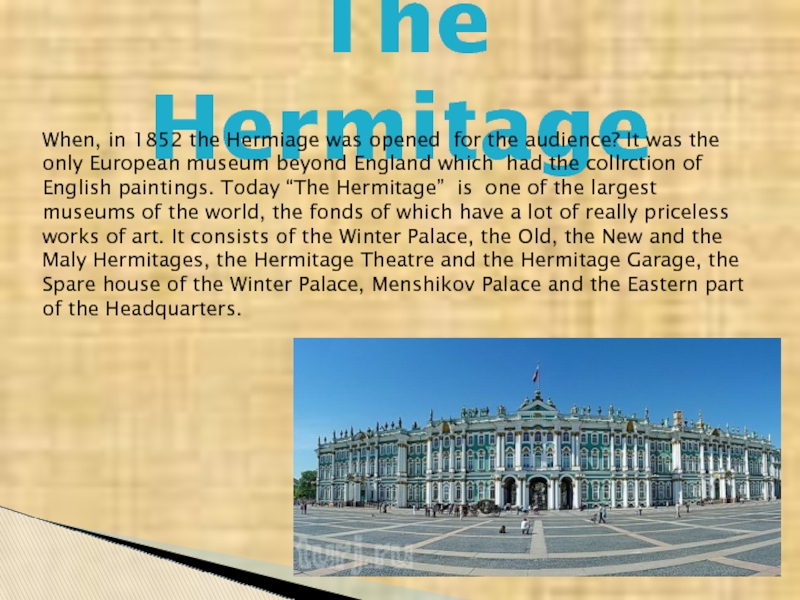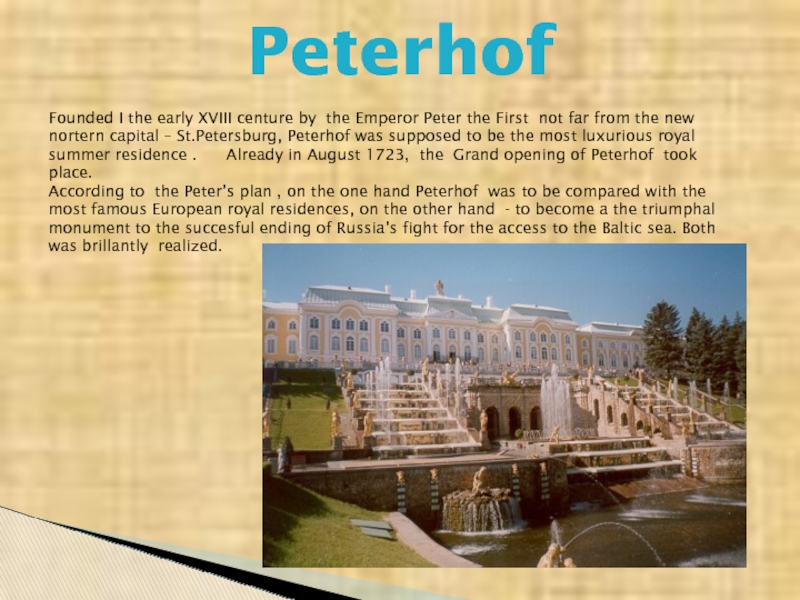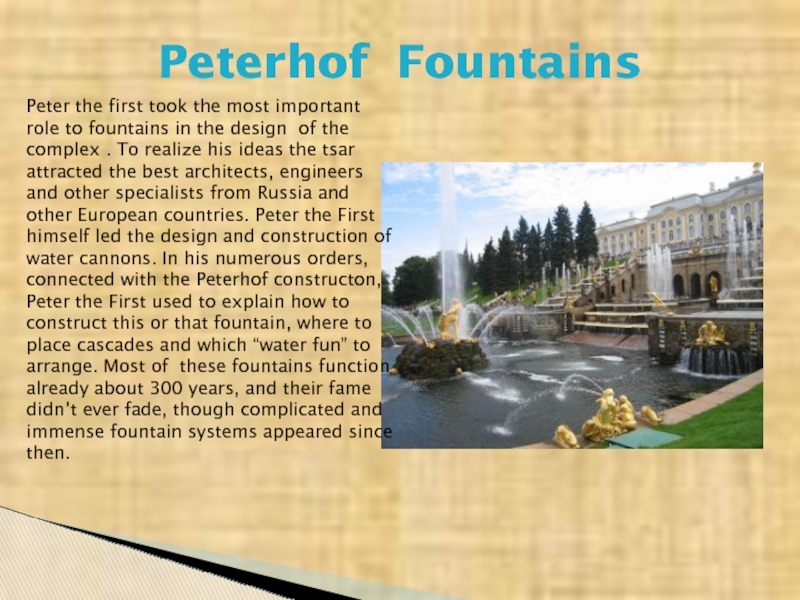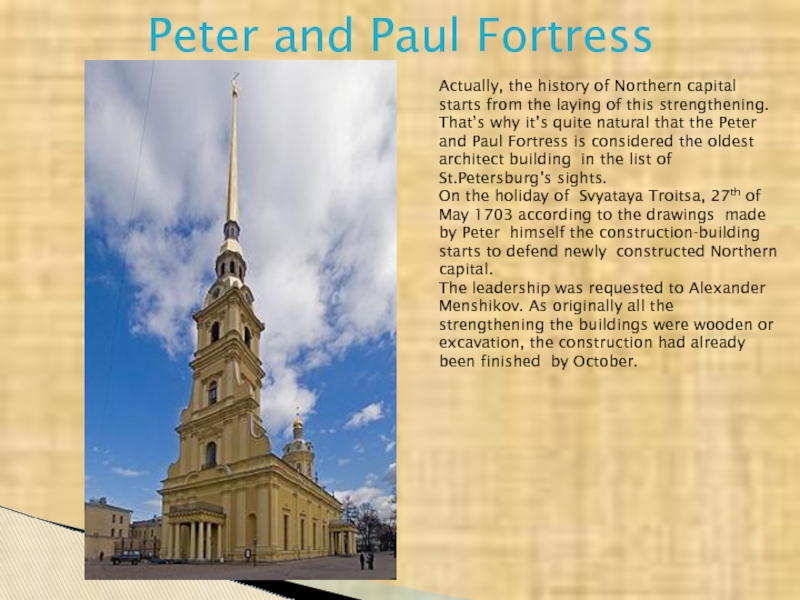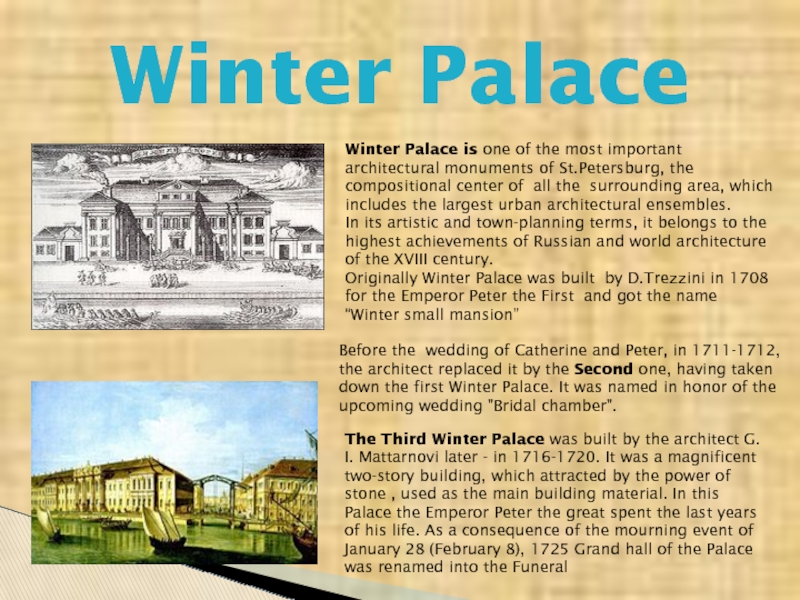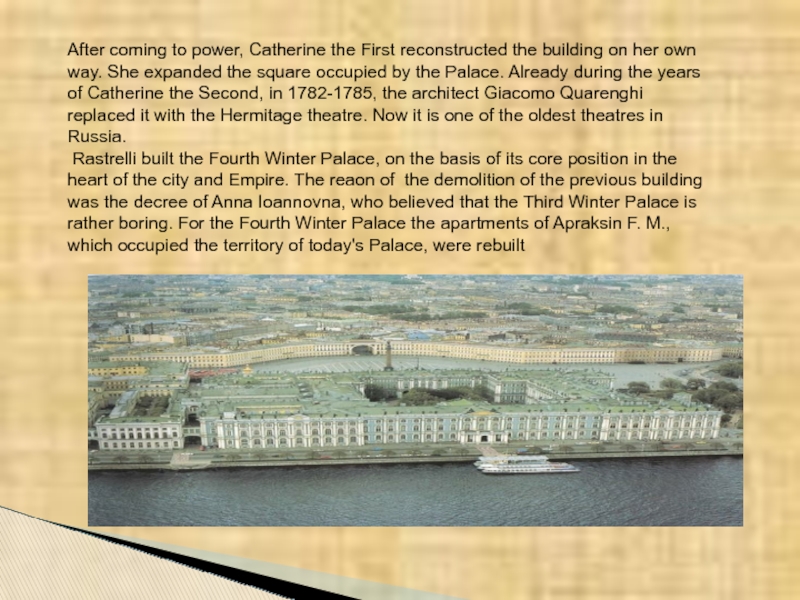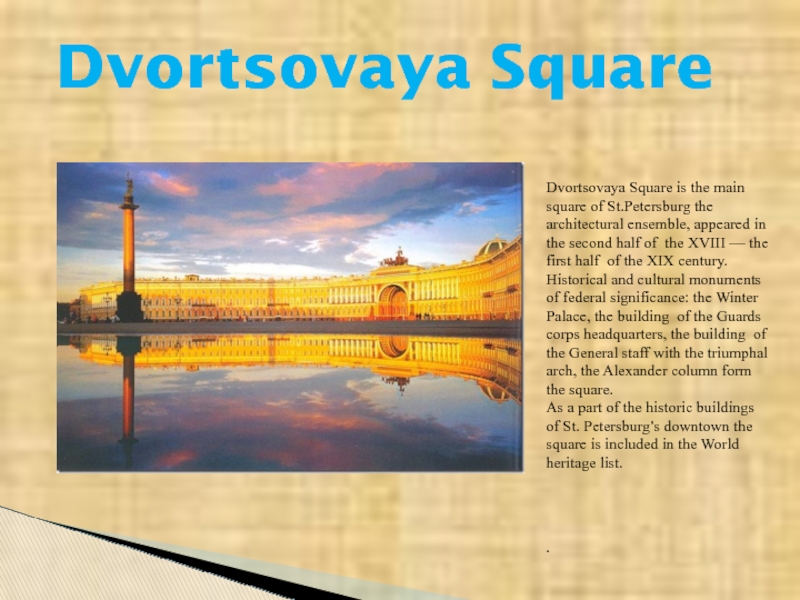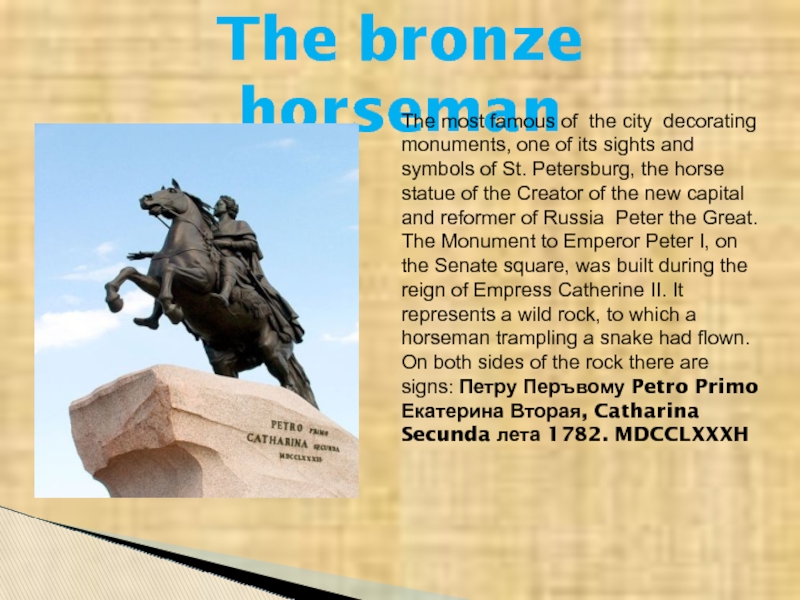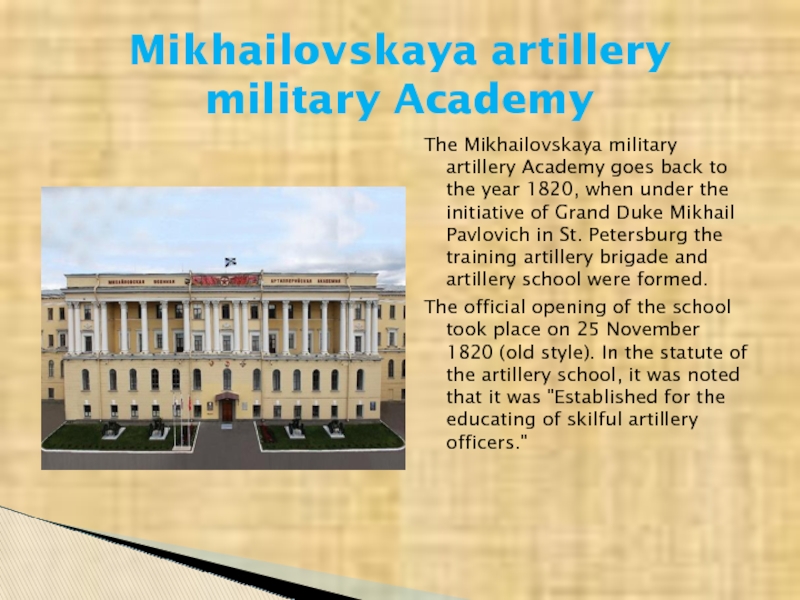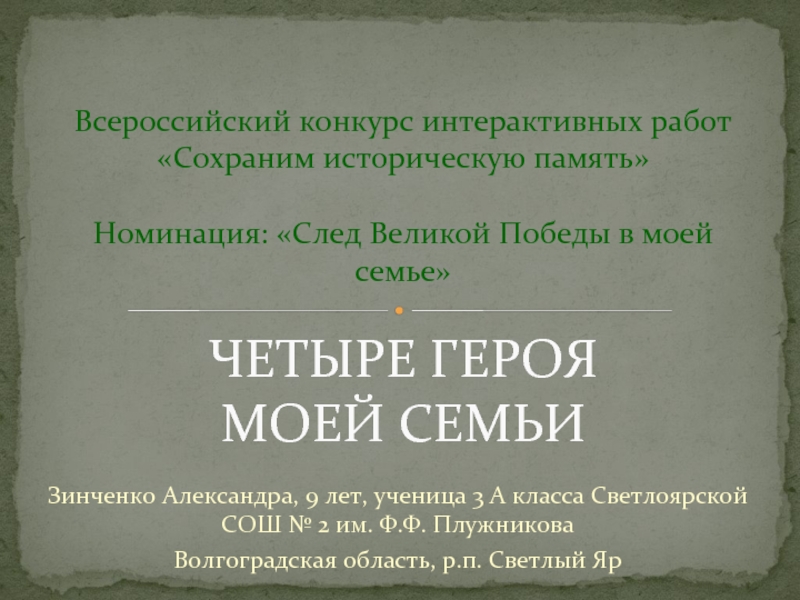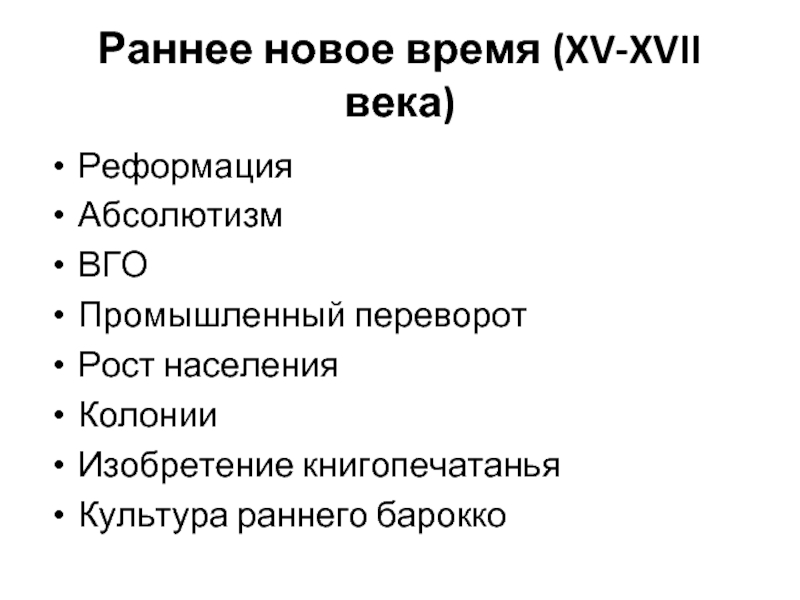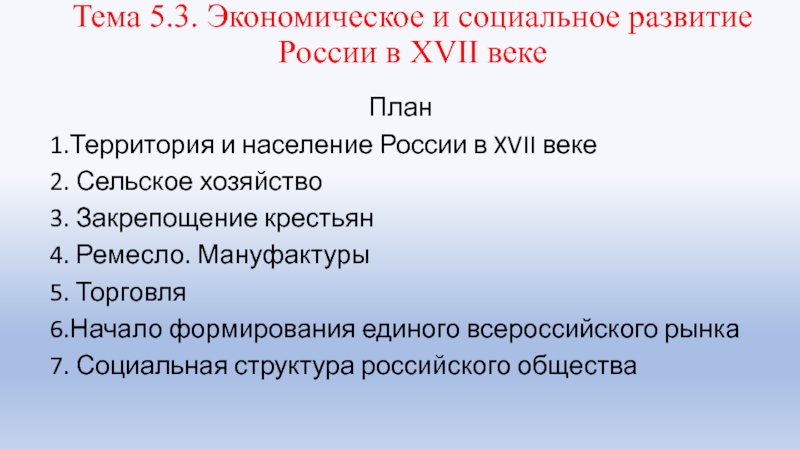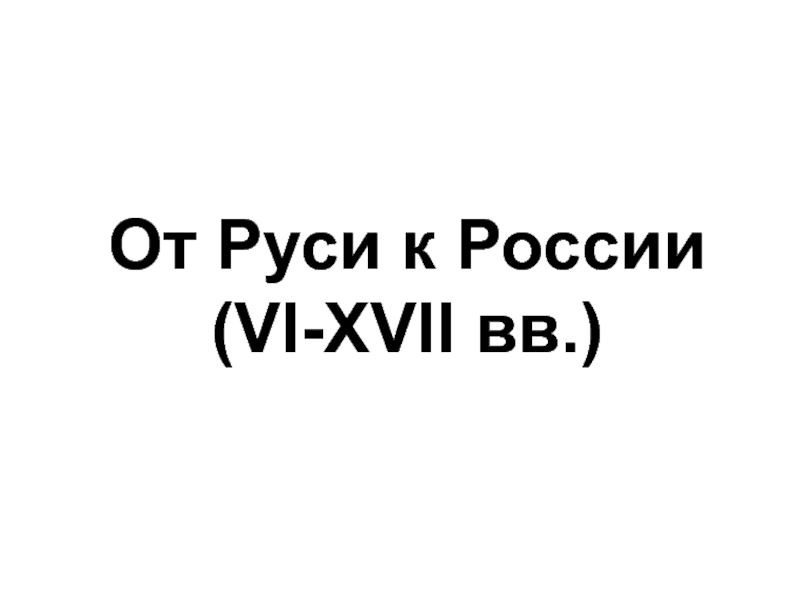- Главная
- Разное
- Дизайн
- Бизнес и предпринимательство
- Аналитика
- Образование
- Развлечения
- Красота и здоровье
- Финансы
- Государство
- Путешествия
- Спорт
- Недвижимость
- Армия
- Графика
- Культурология
- Еда и кулинария
- Лингвистика
- Английский язык
- Астрономия
- Алгебра
- Биология
- География
- Детские презентации
- Информатика
- История
- Литература
- Маркетинг
- Математика
- Медицина
- Менеджмент
- Музыка
- МХК
- Немецкий язык
- ОБЖ
- Обществознание
- Окружающий мир
- Педагогика
- Русский язык
- Технология
- Физика
- Философия
- Химия
- Шаблоны, картинки для презентаций
- Экология
- Экономика
- Юриспруденция
St.Petersburg, the greatest city of Russia презентация
Содержание
- 1. St.Petersburg, the greatest city of Russia
- 2. The foundation of the city. St.Petersburg was
- 3. Raising the bridges is one of the
- 4. The Hermitage When, in 1852 the Hermiage
- 5. Peterhof Founded I the early XVIII centure
- 6. Peterhof Fountains Peter the first took the
- 7. Peter and Paul Fortress Actually, the history
- 8. Winter Palace Winter Palace is one of
- 9. After coming to power, Catherine the
- 10. Dvortsovaya Square is the main square of
- 11. The bronze horseman The most famous of
- 12. The Mikhailovskaya military artillery Academy goes
- 13. The presentation was prepared by the
Слайд 2The foundation of the city.
St.Petersburg was founded in May,17, 1703
On this
Next year, 1704, the fortress Cronshtadt was founded on the island Kotlin to defend the Russia’s sea frontiers
Peter the Great gave an important strategic meaning to the new city to provide the water way from Russia to West Europe.
Слайд 3Raising the bridges is one of the favourite tourist attractions. The
The raising of the bridges is usually watched in the centre of the city. The most popular is the Dvortsovy Bridge. His parts rise like two wings . This bridge is often depicted in many posters
The Dvortsovy raising bridge
Слайд 4The Hermitage
When, in 1852 the Hermiage was opened for the audience?
Слайд 5Peterhof
Founded I the early XVIII centure by the Emperor Peter the
According to the Peter’s plan , on the one hand Peterhof was to be compared with the most famous European royal residences, on the other hand - to become a the triumphal monument to the succesful ending of Russia’s fight for the access to the Baltic sea. Both was brillantly realized.
Слайд 6Peterhof Fountains
Peter the first took the most important role to fountains
Слайд 7Peter and Paul Fortress
Actually, the history of Northern capital starts from
On the holiday of Svyataya Troitsa, 27th of May 1703 according to the drawings made by Peter himself the construction-building starts to defend newly constructed Northern capital.
The leadership was requested to Alexander Menshikov. As originally all the strengthening the buildings were wooden or excavation, the construction had already been finished by October.
Слайд 8Winter Palace
Winter Palace is one of the most important architectural monuments
In its artistic and town-planning terms, it belongs to the highest achievements of Russian and world architecture of the XVIII century.
Originally Winter Palace was built by D.Trezzini in 1708 for the Emperor Peter the First and got the name “Winter small mansion”
Before the wedding of Catherine and Peter, in 1711-1712, the architect replaced it by the Second one, having taken down the first Winter Palace. It was named in honor of the upcoming wedding "Bridal chamber".
The Third Winter Palace was built by the architect G. I. Mattarnovi later - in 1716-1720. It was a magnificent two-story building, which attracted by the power of stone , used as the main building material. In this Palace the Emperor Peter the great spent the last years of his life. As a consequence of the mourning event of January 28 (February 8), 1725 Grand hall of the Palace was renamed into the Funeral
Слайд 9
After coming to power, Catherine the First reconstructed the building on
Rastrelli built the Fourth Winter Palace, on the basis of its core position in the heart of the city and Empire. The reaon of the demolition of the previous building was the decree of Anna Ioannovna, who believed that the Third Winter Palace is rather boring. For the Fourth Winter Palace the apartments of Apraksin F. M., which occupied the territory of today's Palace, were rebuilt
Слайд 10Dvortsovaya Square is the main square of St.Petersburg the architectural ensemble,
Historical and cultural monuments of federal significance: the Winter Palace, the building of the Guards corps headquarters, the building of the General staff with the triumphal arch, the Alexander column form the square.
As a part of the historic buildings of St. Petersburg’s downtown the square is included in the World heritage list.
.
Dvortsovaya Square
Слайд 11The bronze horseman
The most famous of the city decorating monuments, one
On both sides of the rock there are signs: Петру Перъвому Petro Primo Екатерина Вторая, Catharina Secunda лета 1782. MDCCLXXXH
Слайд 12
The Mikhailovskaya military artillery Academy goes back to the year 1820,
The official opening of the school took place on 25 November 1820 (old style). In the statute of the artillery school, it was noted that it was "Established for the educating of skilful artillery officers."
Mikhailovskaya artillery military Academy
Слайд 13 The presentation was prepared by the millitary student of the first
Используемые источники: 1) http://www.ilovepetersburg.ru;
2) http://www.liveinternet.ru/users/sh_la/post214102953/#
